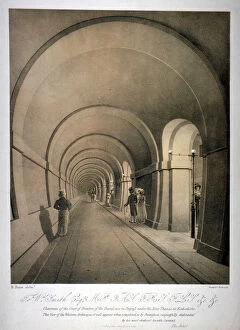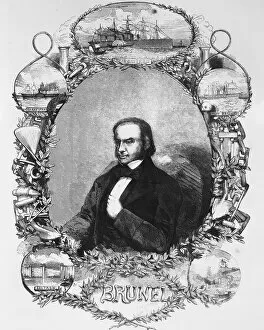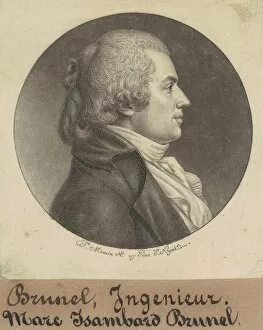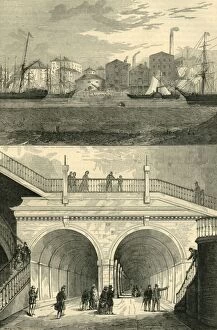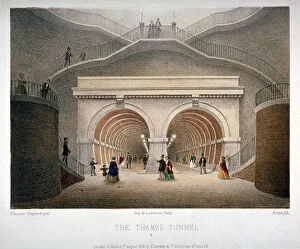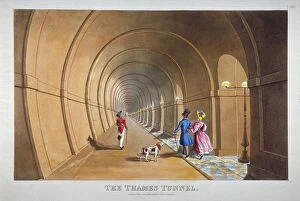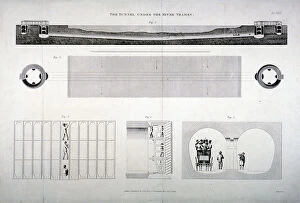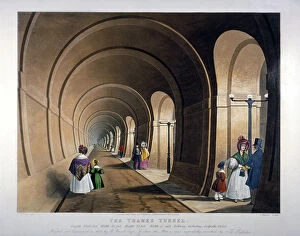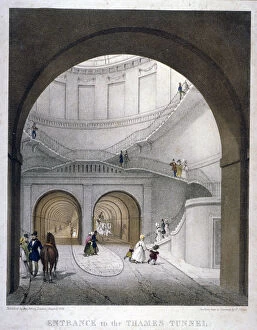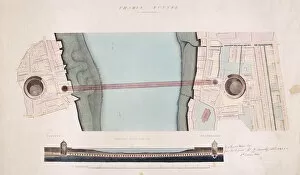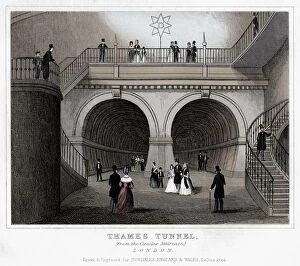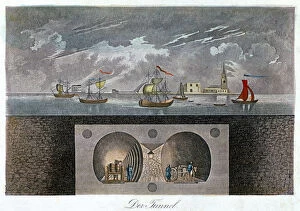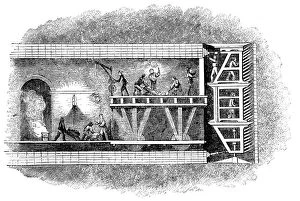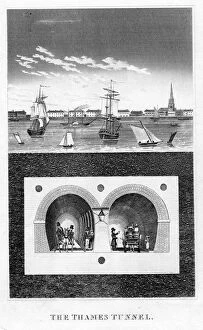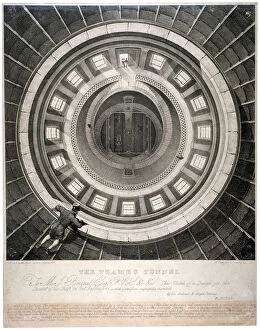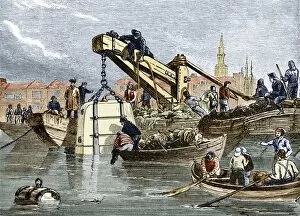Sir Marc Isambard Brunel Collection
Sir Marc Isambard Brunel: Pioneering the Underground World Step into the fascinating world of Sir Marc Isambard Brunel
For sale as Licensed Images
Choose your image, Select your licence and Download the media
Sir Marc Isambard Brunel: Pioneering the Underground World Step into the fascinating world of Sir Marc Isambard Brunel, a visionary civil engineer who left an indelible mark on London's landscape. With his groundbreaking achievements and unwavering determination, he revolutionized transportation and engineering in the 19th century. One of his most iconic projects was the Thames Tunnel, a marvel that connected two sides of London beneath the mighty River Thames. In 1827, construction began on this audacious endeavor, capturing imaginations far and wide. The proposed western archway of this tunnel showcased its grandeur even before completion in c1831. Born in 1798 to French parents, Marc Isambard Brunel inherited their ingenuity and passion for innovation. His son, Isambard Kingdom Brunel, would later follow in his footsteps as another legendary figure in engineering history. Intriguing depictions from various eras shed light on Sir Marc's remarkable journey. A portrait from 1812 showcases him as one of the pathfinders paving the way for future advancements. Another image captures him with dignity during the mid-1850s when his reputation had reached new heights. The diving-bell used during construction stands as a testament to Sir Marc's commitment to pushing boundaries. This ingenious device allowed workers to delve deep into uncharted territory under immense pressure – quite literally – ensuring progress continued unabated. When finally opened for traffic around 1872, the Thames Tunnel became an instant sensation among Londoners and visitors alike. Its interior view from 1830 reveals a bustling hive of activity beneath their feet – a true feat of human achievement hidden below ground level. Detailed plans and elevations meticulously crafted by E Turrell offer insight into both Sir Marc's meticulous approach and innovative thinking throughout every stage of construction. These documents serve as blueprints not only for tunnels but also for inspiration and admiration of his genius.

